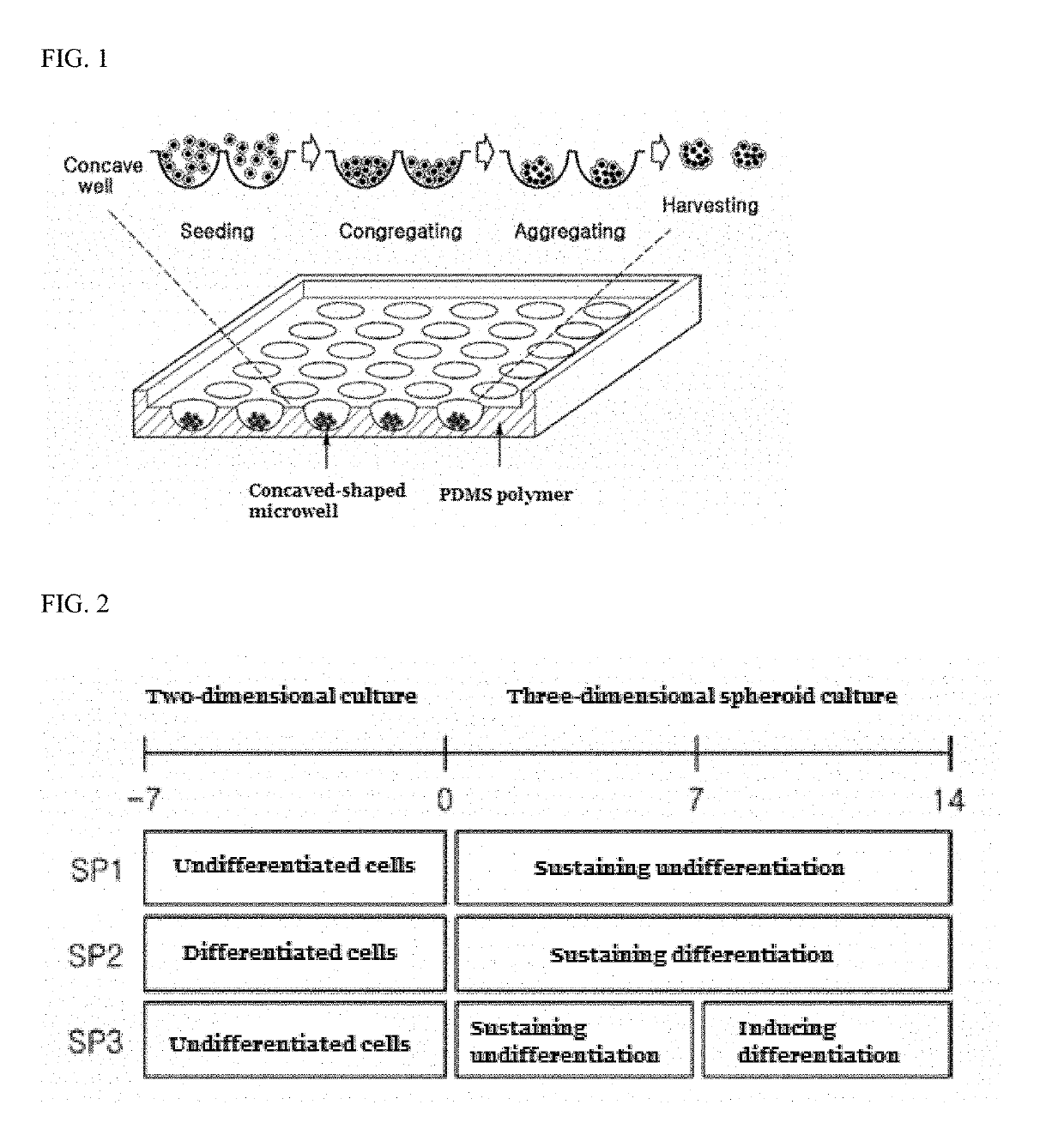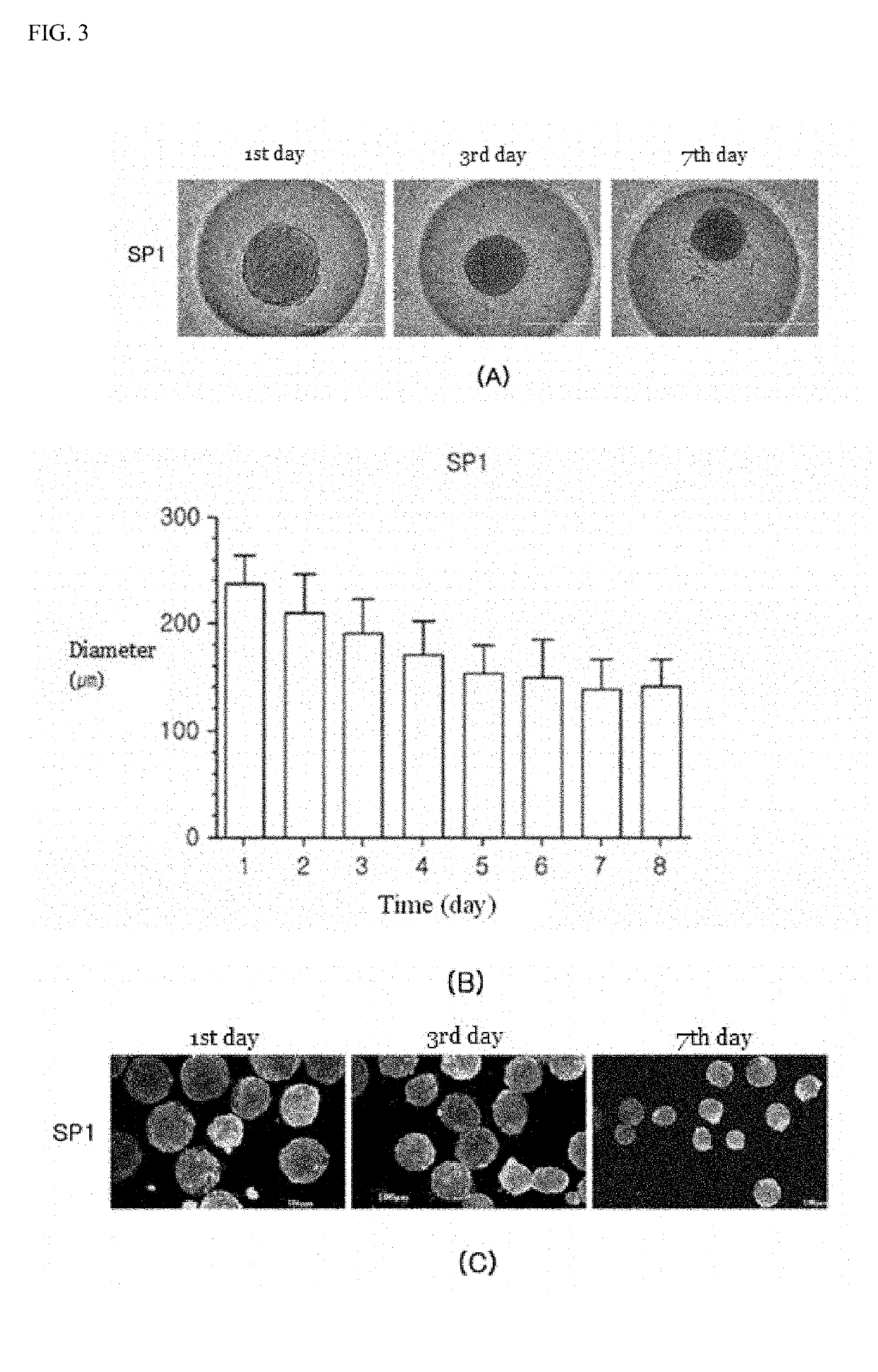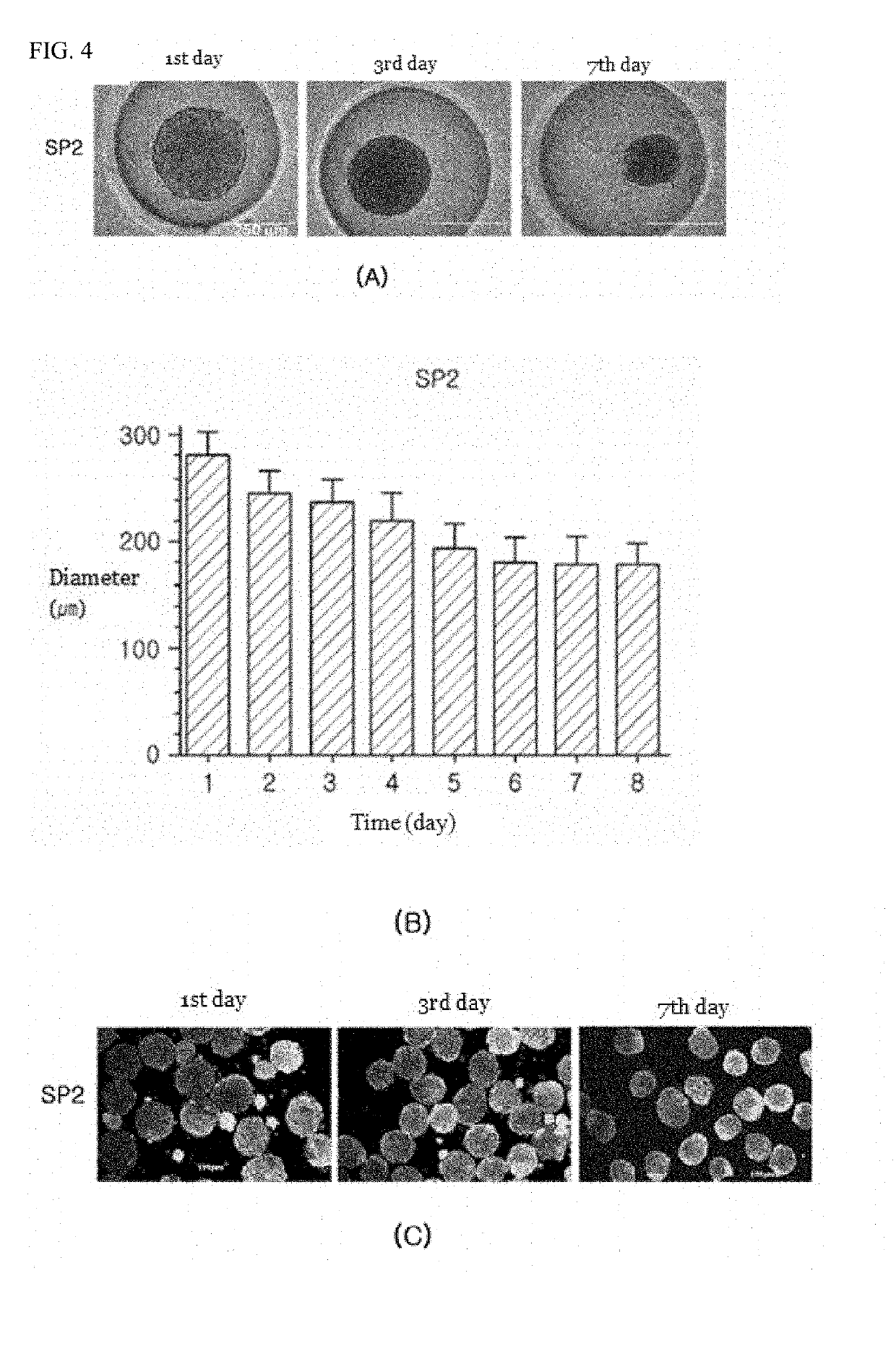Method for culturing differentiation-promoting and -sustaining spheroid form of tonsil-derived stem cells
a stem cell and spheroid technology, applied in the field of culturing a spheroid form of tonsil-derived stem cells, can solve the problems of too small number of mscs that can be separated from adults, difficult use of stem cells, limitation of use, etc., and achieve the effect of increasing the differentiation potency and enhancing the proliferation rate of stem cells
- Summary
- Abstract
- Description
- Claims
- Application Information
AI Technical Summary
Benefits of technology
Problems solved by technology
Method used
Image
Examples
example 1
Culture of Tonsil-Derived Stem Cells
[0120]Tonsillectomy was performed on six patients aged less than ten (five boys and one girl with an average age of 7.2 years) out of those who are patients in the department of otolaryngology head & neck surgery of Ewha Womans Univ. Mokdong Hospital. This study has passed a review of the Clinical Ethics Committee (ECT 11-53-02). Two thirds of enucleated tonsil tissues were used for a clinical biopsy, while the remaining one thirds of enucleated tonsil tissues was used for this experiment.
[0121]A collected tonsil tissue was washed in physiological saline water, after which a connective tissue within the tonsil tissue was comminuted in a cell culture medium RPMI-1640 (Roswell Park Memorial Institute medium 1640, Invitrogen Corporation, Carlsbad, Calif.), in which a collagenase type I (Invitrogen) of 210 U / of an enzyme-mixed solution is mixed with 10 μg / of DNAse (Sigma-Aldrich, St. Louise, Mo.), under the condition of 37° C. for 30 minutes. A susp...
example 2
Three-Dimensional Spheroid Culture of Tonsil-Derived Mesenchymal Stem Cells (TMSC) Using Concave Mold
[0122]A method for three-dimensional culture of tonsil-derived stem cells obtained from the Example 1, was performed in a mold having a structure of FIG. 1. The mold used for inducing cells to form a three-dimensional spheroid structure is one which includes a microwell with 500 μm width and a depth of 300 μm and has a concave structure manufactured from polydimethylsiloxane (PDMS). This mold is one having a microwell width and depth optimal to the cell growth by forming a cell aggregate with a spheroid form structure, and has a merit that hundreds to thousands of spheroid-formed cells can be produced, if the mold is formed as a multiple-concave one.
[0123]Specifically, as described in Korean Patent Registration No. 10-1282926, this mold was manufactured in such a way that wells could be arranged at a density of 100 wells per a unit cm2 by using soft ithography techniques and a menisc...
example 3
Observation of Changes of a Shape, Size and Survival Rate of a Spheroid Form of Cells
[0129]A shape and size of a spheroid form of cells, produced in the three types of SP1, SP2 and SP3, were observed with a microscope for appropriate culture period, and a size of each spheroid form of cells was measured in contrast by means of a scale bar in microscopy.
[0130]Also, in order to determining there is any change in cell survival, a survival state of the spheroid form of cells produced in three types of SP1, SP2 and SP3 was observed. Using LIVE / DEADassays kit (Invitrogen), live cells (green) and dead cells (red) during a process of producing spheroids were observed. This is based on a principle of promptly distinguishing between dead and live cells by simultaneously carrying out a green-fluorescent calcein-AM stain that reflects an presence of an intercellular esterase activity in live cells as well as a red-fluorescent ethidium homodimer-1 stain that indicates a loss of integrity of a pl...
PUM
| Property | Measurement | Unit |
|---|---|---|
| Time | aaaaa | aaaaa |
| Time | aaaaa | aaaaa |
| Concentration | aaaaa | aaaaa |
Abstract
Description
Claims
Application Information
 Login to View More
Login to View More - R&D
- Intellectual Property
- Life Sciences
- Materials
- Tech Scout
- Unparalleled Data Quality
- Higher Quality Content
- 60% Fewer Hallucinations
Browse by: Latest US Patents, China's latest patents, Technical Efficacy Thesaurus, Application Domain, Technology Topic, Popular Technical Reports.
© 2025 PatSnap. All rights reserved.Legal|Privacy policy|Modern Slavery Act Transparency Statement|Sitemap|About US| Contact US: help@patsnap.com



